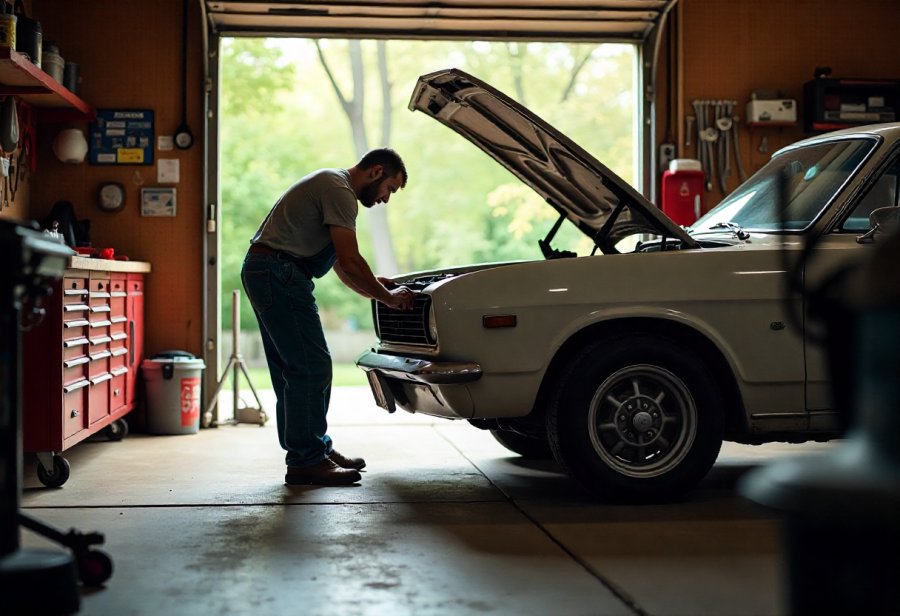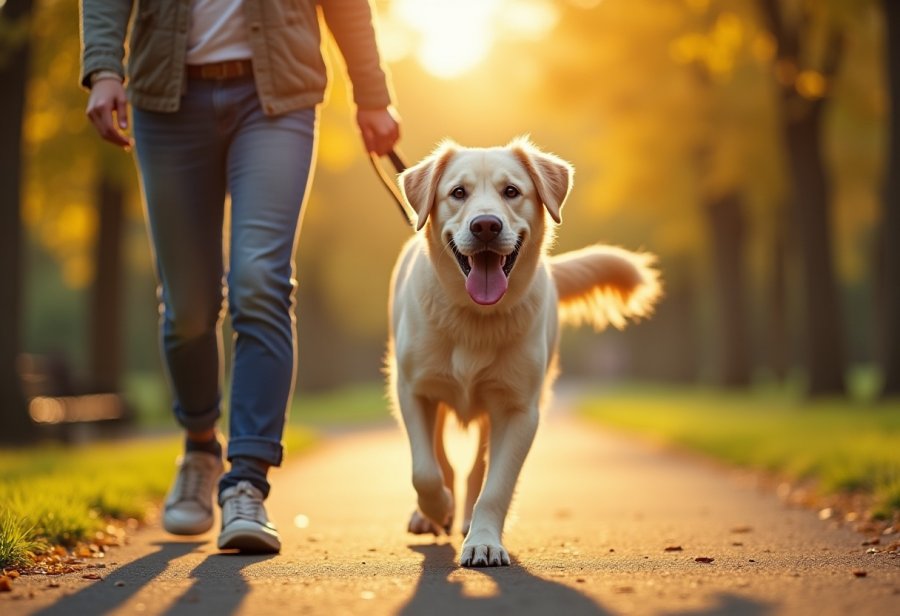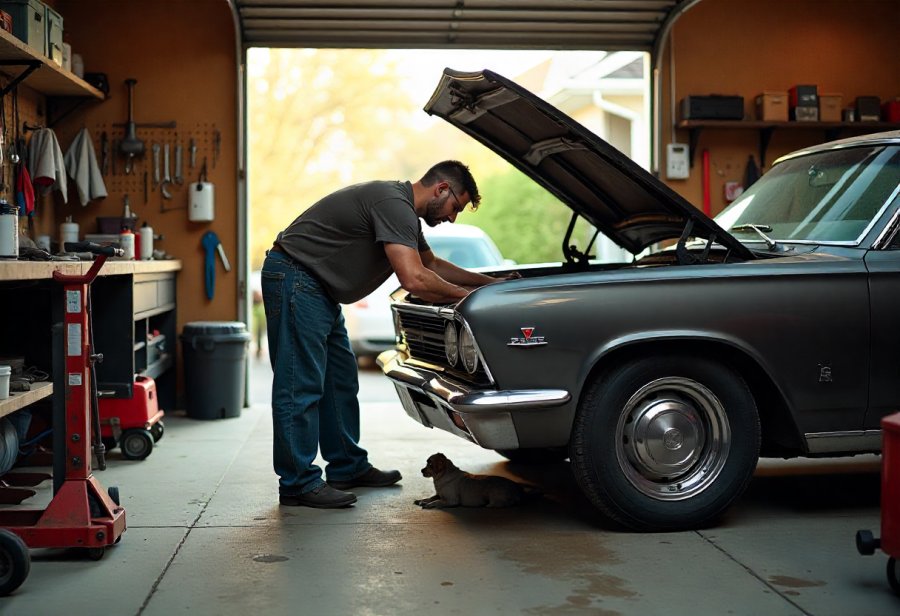Imagine transforming your daily walks into peaceful, bonding moments rather than frustrating routines. Mastering calm dog walking isn’t just about obedience; it’s about cultivating trust, mutual understanding, and a deep connection. In this journey, you’ll learn that calmness reduces stress, enhances focus, and builds a resilient partnership rooted in positive reinforcement and consistent routines. But how do you navigate distractions, reactive behaviors, or sudden challenges that threaten to break your stride? This guide reveals practical techniques—selecting the right gear, using clear cues, and managing environmental triggers—that turn setbacks into growth opportunities. It emphasizes that your own calm demeanor is crucial in shaping your dog’s behavior, reinforcing that patience and steady guidance forge lasting bonds. Are you ready to unlock the power of peaceful walks and deepen your relationship, transforming everyday outings into shared moments of trust and harmony?
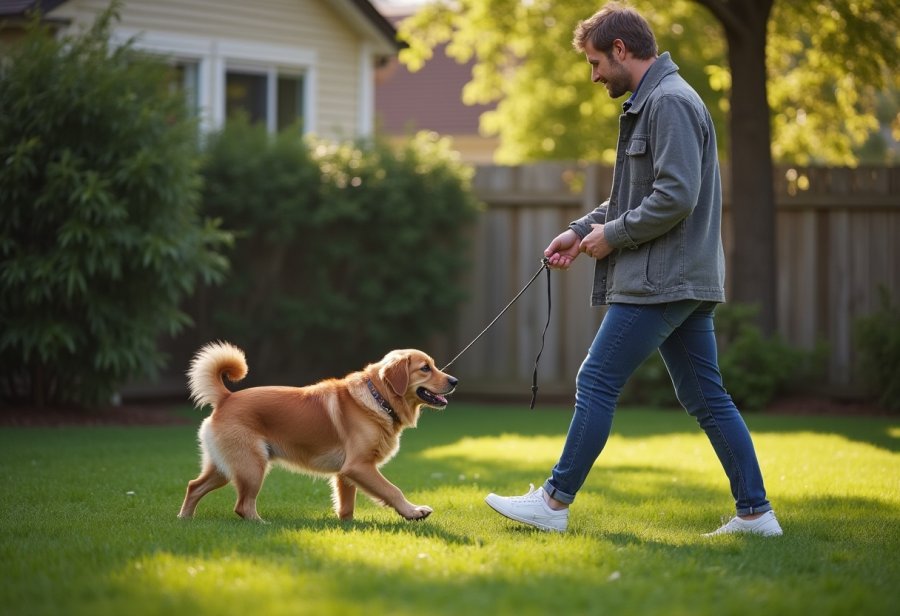
Transform Your Outings: The Power of Calm Dog Walking
Walking calmly with your dog isn’t just about getting from point A to point B; it’s about creating a peaceful connection rooted in trust and mutual understanding. When your dog learns to walk at your side without pulling or jumping, those outings become more than routine—they turn into shared moments of calmness and confidence. This approach isn’t about strict discipline but about fostering a relaxed, communicative relationship that benefits both of you.
A calm walk helps reduce stress for everyone involved. Dogs feel more secure when their environment isn’t overwhelming, making them less likely to become anxious or hyperactive. When they stay focused and composed, walks become more enjoyable and predictable, turning daily routines into positive experiences rather than sources of frustration.
Building this kind of connection deepens your bond. When your dog sees you as a steady, calm leader, they’re more likely to trust your cues and follow your guidance willingly. Over time, these peaceful walks lay the foundation for better behavior in other areas of life, creating a cycle of trust, cooperation, and mutual respect.
Calm walking is more than obedience—it’s communication. Gentle movements, a relaxed voice, and consistent cues teach your dog to stay attentive and calm despite distractions. When both of you are relaxed, routine walks become opportunities to connect, teach patience, and reinforce positive habits that last well beyond the leash.
Starting with calm, consistent walks doesn’t require complicated training. Small steps such as practicing basic commands and choosing quiet environments build a strong foundation. Over time, these routines turn daily outings into moments of trust and connection, making every walk a peaceful adventure that strengthens your relationship.
Unlocking Dog Behavior & Embracing Consistency: Foundations of Effective Walking
Understanding your dog’s behavior is the foundation of effective calm walking. Dogs communicate a lot through body language—tail position, ear orientation, and posture all reveal how they’re feeling. Recognizing these signals allows you to respond calmly and appropriately, which builds trust and makes training smoother. When your dog feels understood, they’re more likely to relax and focus during walks.
Consistency is just as vital. Dogs thrive on routines and knowing what to expect. Using the same commands, following predictable routines, and maintaining steady expectations create a sense of security. When your dog learns that “heel” always means walking at your side, they’re more likely to stay focused and calm. Inconsistent signals or routines can confuse them, making good leash manners harder to develop.
Modern training favors gentle, positive methods over harsh corrections. Instead of dominance or punishment, rewarding good behavior strengthens your bond and encourages calmness. Treats, praise, and gentle guidance make walks enjoyable and reinforce desired habits. This approach helps your dog associate walks with positive experiences, making calm, attentive walking the norm.
Leash training is central. Teaching your dog to walk politely involves patience and repetition. Guiding rather than forcing, rewarding focus, and staying consistent build reliable habits. Over time, your dog will understand that staying close and attentive makes walks more pleasant and reduces pulling or lunging.
Addressing behavioral issues like jumping or barking often stems from overstimulation or frustration. Recognizing triggers and calmly redirecting your dog’s attention helps them stay relaxed, even in stimulating environments. This steady, positive approach fosters self-control and makes walks more peaceful for everyone.
Clear communication cues—body language, voice tone, and commands—are essential. Using consistent, easy-to-understand signals minimizes confusion and promotes calm responses. When your cues are reliable, your dog can respond confidently, turning walks into shared moments of trust and focus.
Building these principles takes time, patience, and steady effort. Every walk is an opportunity to reinforce routines and behaviors. With consistent application, your dog will develop better focus, self-control, and trust, making calm walking a rewarding part of your relationship.
Master Techniques for Peaceful Strolls: Achieving Calmness on the Move
Achieving calmness during walks begins with selecting the right equipment. A comfortable, well-fitting collar or harness paired with a sturdy leash allows gentle control without causing discomfort. This setup helps prevent pulling and makes guiding your dog smoother, setting a calm tone from the start. Your own posture and tone also matter—walking confidently and speaking softly encourages your dog to mirror your relaxed energy, creating an atmosphere of tranquility.
Using simple commands like “sit,” “stay,” and “heel” provides a solid foundation for calm behavior. Practice these in quiet spaces first, so your dog learns to focus on you rather than distractions. When your dog pulls or gets distracted, pause to teach patience—this shows that pulling won’t get them where they want to go. Redirect attention with treats or cues, then praise when they respond correctly, reinforcing calm, focused walking.
Managing distractions is key as your dog progresses. Start in familiar, low-stimulation areas, then gradually try busier environments. Use positive reinforcement generously—reward your dog for remaining attentive and calm amid new sights and sounds. If they react strongly, calmly redirect their focus rather than reacting with frustration. Over time, your dog will develop confidence and self-control, even in stimulating settings, making walks more peaceful.
Leash pulling is often rooted in curiosity or excitement. When your dog pulls ahead, gently stop and guide them back to your side. Reward calmness once they settle, reinforcing that patience pays off. Using tools like clickers can mark calm behavior precisely, speeding up learning and making training more effective. Remember, your calm demeanor influences your dog’s reactions—model patience and consistency to foster a peaceful walk every time.
Finally, stay steady when challenges arise. When other dogs, loud noises, or interesting scents distract your dog, maintain your calm. Respond with a relaxed voice and gentle redirection, avoiding tension or harsh corrections. These steady responses teach your dog that calmness and focus are more rewarding than reacting impulsively. With patience and consistent practice, peaceful walks become a natural, shared experience, strengthening your bond and making every outing a calming, bonding moment.
For additional guidance on creating a peaceful walking routine, consider exploring expert tips and resources available at Peaceful Dog Walking. Incorporating these strategies can help both you and your dog enjoy more relaxed and enjoyable outings together, reinforcing the calmness you aim to achieve during every walk.
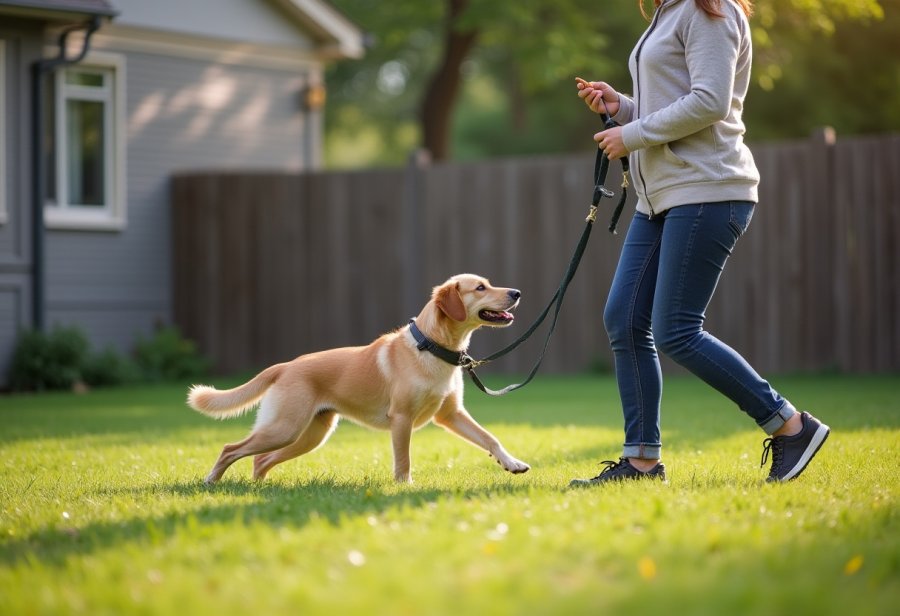
Bringing Calm to Life: Applying Walking Techniques in Every Day Adventures
Applying calm walking techniques in daily life starts best in familiar, low-distraction settings like your backyard or a quiet neighborhood street. These environments provide a safe space for both you and your dog to practice routines without feeling overwhelmed, helping to build confidence and focus. Begin your walk with a confident posture, using your chosen gear—a comfortable harness and sturdy leash—and review basic commands like “heel” and “sit” to set clear expectations.
Maintain a relaxed tone and steady pace throughout the walk. Reward your dog with treats or praise whenever they walk at your side or respond to cues, reinforcing good habits. If your dog pulls or gets distracted, pause calmly—this teaches that pulling won’t get them where they want—and redirect their attention back to you with gentle guidance. Consistent application of this pause-and-redirection method helps your dog learn patience and focus.
As your dog grows more comfortable, gradually introduce more stimulating environments such as parks or busy sidewalks. Keep reinforcing calm, attentive behavior, and avoid reacting harshly to setbacks. Remember, occasional distractions are normal; patience and persistence are key. Over time, your dog will realize that staying relaxed and focused during walks leads to rewards and positive experiences, making outings more peaceful.
When facing common issues like leash pulling or reacting to other dogs, respond with calm, steady guidance. Instead of pulling or yelling, gently stop and guide your dog back to your side, rewarding their calmness once they settle. This approach shows that calmness is more rewarding than chaos. Using tools like clickers or calming aids can support your efforts, especially in more stimulating settings, making it easier for your dog to stay centered.
Your own calm demeanor greatly influences your dog’s behavior. Approach each walk with patience and confidence, modeling relaxation and steady guidance. This creates a ripple effect, encouraging your dog to mirror your calm attitude and focus. With consistent practice and gentle reinforcement, these techniques turn everyday walks into shared moments of trust and tranquility, strengthening your bond every step of the way.
Deepening Trust and Connection Through Gentle Walks
Calm walks do more than teach good manners—they’re a powerful way to build trust and deepen your bond with your dog. When your dog learns to walk peacefully at your side, it signals they trust your leadership and feel safe with you. This sense of security encourages them to pay closer attention to your cues and follow your guidance willingly. Over time, these shared moments of patience and focus become the foundation of a respectful, connected relationship.
Consistency is key. When you approach walks with gentle guidance, praise, and positive reinforcement, your dog begins to associate calmness with good things happening. This predictability creates a routine they can rely on, making them more eager to respond to your lead. As your dog’s behavior improves, so does their trust—transforming everyday outings into opportunities for genuine connection.
Every successful calm walk reinforces this trust. When your dog responds to your cues without hesitation, they experience a sense of partnership and understanding. These moments of cooperation aren’t just about obedience—they’re the building blocks of a resilient relationship rooted in respect and affection. Your dog learns that remaining relaxed and attentive earns your approval, strengthening positive feelings toward you.
Walking calmly also cultivates respect. Your steady, gentle guidance shows your dog that you’re a reliable, caring leader. This respect makes your dog more receptive to commands and more confident in unfamiliar settings. As routine develops, the walk becomes a shared ritual of trust—a daily affirmation of your partnership.
This bond extends beyond the walk itself. The calm, positive atmosphere you foster during outings spills over into other aspects of your dog’s life, encouraging better behavior and emotional stability. These peaceful walks become a cornerstone for a relationship grounded in mutual understanding and love, enriching your connection every step of the way.
Focus and Harmony: Teaching the Heel and Other Key Skills
Teaching your dog to walk at heel starts with creating a clear, consistent routine. Begin in a quiet space, holding a treat close to your dog’s nose to gently lure them into position beside your leg. When they walk smoothly at your side, reward immediately. Repeating this process helps your dog associate the command “heel” with staying close and focused. Keep training sessions short, positive, and gradually increase the distance and mild distractions as your dog improves.
Patience and steady reinforcement are key. If your dog begins to drift or pull ahead, stop walking and gently guide them back to your side before praising. This teaches that staying attentive and close results in positive outcomes. Avoid harsh corrections—use gentle guidance and consistent praise to foster calm, focused walking. Over time, this builds a reliable habit of attentiveness that becomes second nature for your dog.
Practicing in different environments is essential. Start in familiar, low-stimulation areas, then slowly introduce busier streets or parks. Each new setting tests your dog’s focus and helps them stay calm amid distractions. Reinforce the heel command regularly, making it a natural part of your daily routine. When your dog responds confidently regardless of the environment, walking in harmony becomes effortless and enjoyable for both of you.
Using tools like a clicker can sharpen your training. Marking the moment your dog walks at your side with a quick click, followed by a treat, speeds up learning. Pair this with calm body language and a steady voice to reinforce a peaceful tone. These small cues help your dog see the heel as a positive, rewarding experience, strengthening focus and cooperation.
Mastering the heel isn’t just about obedience; it’s about building trust and mutual understanding. Consistent reinforcement and patience will help your dog develop better focus, self-control, and confidence. As they respond reliably, walking in harmony turns into a shared, calming activity that deepens your bond and makes every outing more peaceful and enjoyable.

Overcoming Challenges: Strategies to Maintain Calm and Address Distractions
Keeping calm during walks can be challenging, especially when unexpected distractions arise. Other dogs, loud noises, or enticing scents can easily pull your dog’s attention away, leading to pulling, barking, or sudden lunges. The key is to stay relaxed yourself—dogs pick up on your energy, and if you react with frustration or impatience, they will mirror that tension. Respond with a calm, steady voice and gentle redirection, which teaches your dog that focus and composure are more rewarding than chaos.
When your dog begins to react strongly, pause briefly and avoid rushing forward. This teaches them that pulling or reacting doesn’t get them where they want to go. Use treats or cues to redirect their attention back to you, rewarding calm focus. Consistently applying this approach builds patience and self-control, gradually reducing reactive behaviors. If anxiety or overstimulation are frequent issues, consider environmental adjustments like walking at quieter times or using calming aids to help your dog stay centered.
Addressing these challenges requires patience and steady practice. Harsh corrections or yelling can increase your dog’s stress, making it harder to regain calm. Instead, focus on gentle guidance and positive reinforcement, rewarding your dog for staying relaxed. Remember, setbacks are part of the process; each is an opportunity to reinforce good habits with calm, clear cues. Over time, your dog will learn that peaceful behavior during walks leads to more enjoyable, stress-free outings.
Equipping yourself with the right tools also makes a difference. Proper gear like well-fitting harnesses or collars and sturdy leashes give you gentle control. Using clickers or distraction-reducing aids can speed up training, especially in stimulating environments. Seeking advice from trainers or behaviorists can provide tailored strategies, helping you navigate setbacks more smoothly and make consistent progress.
Most importantly, your own calm attitude sets the tone. Dogs are perceptive and tend to mirror your energy. Approaching each walk with patience and confidence creates a ripple effect that encourages your dog to stay focused and relaxed. With steady effort and gentle guidance, you’ll turn challenging moments into opportunities for growth, making every walk a peaceful, bonding experience that strengthens your relationship.

